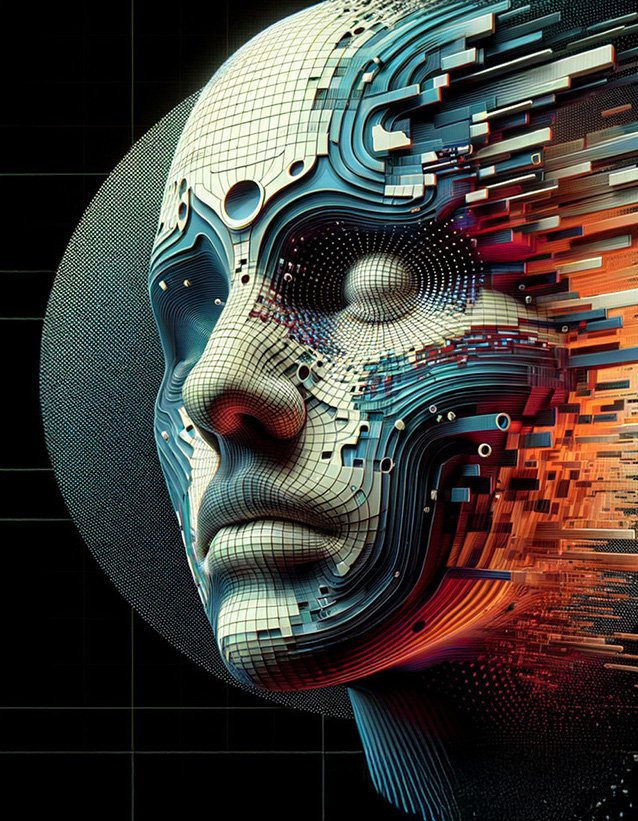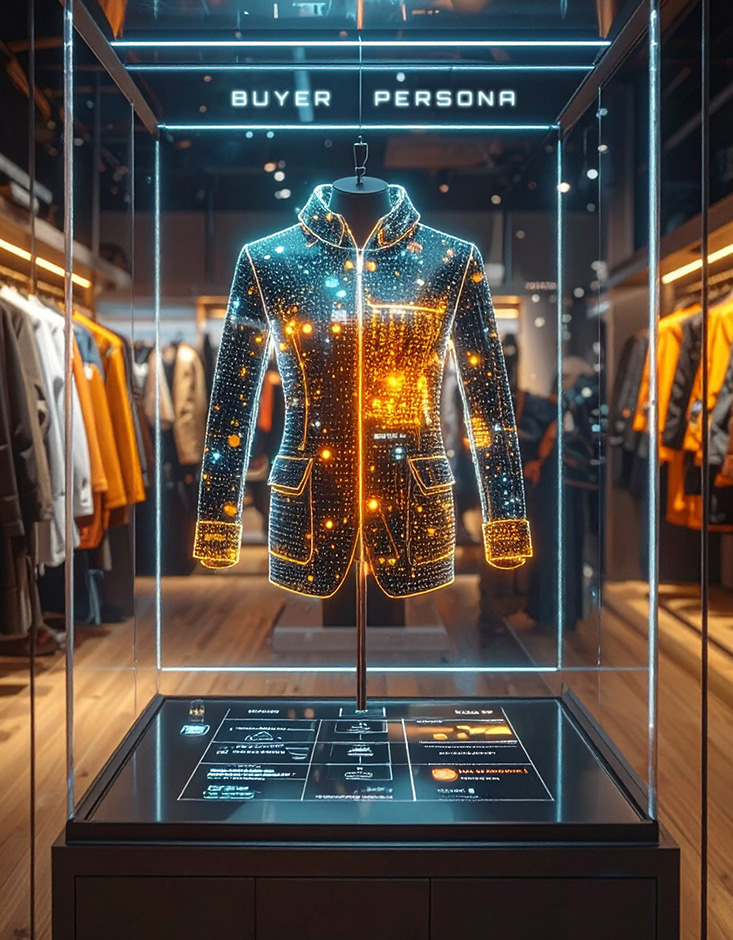The world of e-commerce is a hyper-competitive, fast-moving landscape where staying ahead of the curve is the difference between a thriving brand and one left behind. For the experienced marketer, the challenge isn’t just about crafting a compelling message—it’s about doing it at a massive scale. You know the pain of endless hours spent writing product descriptions, personalizing ad copy for a hundred different segments, and trying to keep your content fresh across every channel. The good news is, a new era is dawning, driven by a powerful technology: generative AI.
This is the shift that Google is paying attention to, and so should you. This guide will walk you through the essential applications of generative AI in your content and e-commerce marketing efforts. We’ll explore how this technology can automate mundane tasks, enable hyper-personalization, and fundamentally change your approach to customer engagement. By the end, you’ll have a clear understanding of how to leverage artificial intelligence to not only streamline your workflows but also deliver a richer, more tailored experience to your customers.
What is Generative AI and Why It Matters to E-commerce
Generative AI is a category of artificial intelligence models that can create new, original content. Unlike traditional AI that analyzes existing data or predicts trends, generative AI has the unique ability to produce human-like text, images, videos, and more from a simple prompt. According to a recent survey, 86% of e-commerce decision-makers want to increase their investments in AI, with 97% seeing a positive effect on their sales. This technology is becoming a game-changer for online businesses looking to innovate and grow.
For e-commerce, this isn’t just a buzzword; it’s a strategic imperative. The primary value comes from the ability to scale. Instead of a team of ten writers creating product descriptions for a catalog of 1,000 items, a single prompt can generate unique, SEO-friendly copy for all of them in a fraction of the time. This type of AI content creation is rapidly becoming a core component of successful e-commerce marketing strategies.
Revolutionizing Content Creation: From Product Descriptions to Blog Posts
The most immediate and impactful application of generative AI is in content creation. This addresses a major pain point for brands with extensive product catalogs. Manually writing unique, compelling, and SEO-optimized descriptions for every item is simply not sustainable.
Here’s how generative AI is transforming your content pipelines:
Product Descriptions: You can feed an AI model a few key product attributes—material, color, features, and target audience—and it will generate multiple, engaging descriptions. These can be optimized for different platforms, from a concise Instagram caption to a detailed, long-form paragraph for your website. This boosts efficiency and helps maintain consistency across your entire catalog.
Marketing Copy: Beyond product listings, generative AI can create ad copy, email headlines, social media posts, and even SMS messages. These tools can be trained on your brand’s voice and tone, ensuring that every piece of content feels authentically yours, regardless of who writes the prompt. The process is a seamless blend of automation and human oversight.
Blog Posts and Articles: As you know, content is crucial for driving organic traffic. Generative AI can assist in outlining blog posts, drafting sections, and even writing entire articles that provide value to your audience. This can help you capture long-tail search queries and establish your brand as an authority.
Visual Assets: The power of generative AI extends beyond text. Tools like Flair.ai allow you to create stunning, high-quality product images and marketing visuals without the need for expensive photoshoots. You can generate on-model photography, new backgrounds, and entire scenes from a text prompt.
Hyper-Personalized Marketing at Scale
One of the greatest promises of artificial intelligence is the ability to personalize every customer interaction. Generative AI takes this to a new level, moving beyond simple product recommendations to dynamic, contextually relevant campaigns.
Personalizing Ad Campaigns
Traditional ad campaigns are often based on broad segmentation. With generative AI, you can move toward true personalization at scale. AI can analyze customer data, including browsing history, past purchases, and demographics, to create customized ad copy and visuals for individual shoppers. A McKinsey report highlights that the use of AI is building momentum, with more than three-quarters of organizations now using it in at least one business function. This level of granular targeting improves conversion rates and reduces customer acquisition costs.
Dynamic Ad Copy: AI can generate different versions of an ad’s headline and body text to match a user’s specific interests. For example, a user who frequently browses running shoes might see an ad with a headline focused on “hitting a new personal record,” while another user interested in casual wear sees a headline about “everyday comfort.”
Automated Campaign Management: The future of marketing automation is here. AI tools can manage and optimize ad campaigns in real-time, adjusting bids, audiences, and creative assets to maximize performance without constant human intervention.
Enhancing Customer Engagement
Generative AI is not just about outbound marketing; it’s about creating a more intelligent and responsive customer journey.
AI-Powered Chatbots: The next generation of chatbots can handle more than just basic FAQs. They are intelligent systems that can understand a customer’s intent, provide personalized product recommendations, and even guide them through a complex purchase journey. This gives you another reason not to leave the house for shopping by giving you the same type of expert consulting you’d receive in a local store.
Interactive Search: As customers’ expectations evolve, so must your search capabilities. Generative AI allows for natural language search queries, where a customer can type “bohemian dress under $100 for a summer brunch” and get spot-on results. This improves product discovery and user experience.
Overcoming Challenges and Building a Strategy
While the potential of AI in e-commerce is immense, it’s not without its challenges. The most common concerns revolve around data quality, ethical use, and the need for human oversight. It’s crucial to remember that this technology is a tool, not a replacement for human creativity and judgment.
To build a successful marketing strategy using generative AI, you must:
Start with a Clear Goal: Don’t just implement AI because it’s a trend. Identify a specific pain point—like the need for thousands of product descriptions—and use AI to solve it.
Ensure Quality Control: As a recent survey found, 27% of companies using generative AI have employees review all content before it’s published. You must implement a human-in-the-loop workflow to ensure accuracy, brand consistency, and ethical integrity.
Invest in Data: The quality of the output depends on the quality of the input. Clean, well-structured data is essential for training AI models and generating relevant content.
Embrace Experimentation: This technology is still rapidly evolving. The best thing you can do is to embrace this change and find out for yourself what works and what doesn’t. Start with small-scale experiments, measure the results, and iterate.
The Future of Your E-commerce Strategy is Here
Generative AI is not a distant future trend; it’s a present-day reality that is already transforming how successful businesses operate. From automating product descriptions and personalizing ad copy to creating engaging visuals, this technology is empowering marketers to achieve unprecedented speed and scale. By adopting these new tools and integrating them into your existing workflows, you can improve efficiency, enhance customer engagement, and maintain a competitive edge. The opportunity to reshape your workflows and capture value from this technology is now.
AI Tools for Content and Copywriting
These tools are your virtual writing assistants, capable of generating everything from catchy headlines to full-length articles.
Copy.ai: This is a fantastic starting point. It offers a wide range of templates for all your marketing copy needs, including product descriptions, social media captions, and ad copy. You simply input a few details, and it gives you a variety of options to choose from.
Jasper: If you need to produce longer-form content like blog posts or entire articles, Jasper is a popular choice. It’s designed to help you with research, outlining, and drafting to significantly speed up your content creation workflow.
Writesonic: This tool is great for generating a diverse set of assets. It can create blog posts, but it can also help you with landing pages, ad copy, and even full-fledged articles.
AI Tools for Visuals
Visuals are critical in e-commerce, and these tools help you create them without needing a full-scale production team.
Canva: While it’s a general design tool, Canva has integrated powerful AI features. You can use its “Magic Media” feature to generate unique images from a text prompt, or use AI to remove backgrounds from product photos in seconds.
Flair.ai: This tool is specifically built for e-commerce. It allows you to create high-quality, on-brand product images from text prompts. You can place a product photo on a variety of backgrounds or scenes, which is perfect for creating dynamic visual ads.
Synthesia: For video content, Synthesia lets you create AI-powered videos with realistic avatars. This can be a huge time-saver for creating product explainers, instructional videos, or personalized promotional content without having to film anything.
AI Tools for Customer Engagement
These are the tools that help you build a more personalized and interactive experience for your customers on your website.
Custom Models (like ChatGPT): Instead of just using a pre-packaged chatbot, you can use a model like ChatGPT and train it to be your brand’s virtual assistant. It can answer customer questions, offer personalized recommendations based on their browsing history, and even guide them through the checkout process.
Shopify AI: If your store is on Shopify, their native AI tools are a great way to start. They can help you with tasks like writing product descriptions, creating FAQs, or even generating effective email marketing content.
These tools are all about giving you the ability to scale your creativity. The more you use them, the more you’ll see how they can free you up to focus on the big-picture strategy.
FAQ: Your Top Questions Answered
No. Generative AI is a powerful assistant that automates repetitive, low-impact tasks. This frees you up to focus on high-impact strategic work, such as competitive analysis, brand development, and building long-term customer relationships. In fact, a survey suggests that increasing AI adoption may lead to larger, more specialized e-commerce teams.
The primary risks include potential data privacy and security concerns, the risk of reinforcing biases present in training data, and the need for quality assurance to prevent the generation of inaccurate or off-brand content. Human oversight is essential to mitigate these risks.
Absolutely. What was once limited to large enterprises is now accessible to businesses of all sizes. Many AI tools are designed for small to medium-sized businesses and offer user-friendly interfaces with a low barrier to entry.
The most immediate and impactful application of generative AI is in content creation. This addresses a major pain point for brands with extensive product catalogs. Manually writing unique, compelling, and SEO-optimized descriptions for every item is simply not sustainable.




